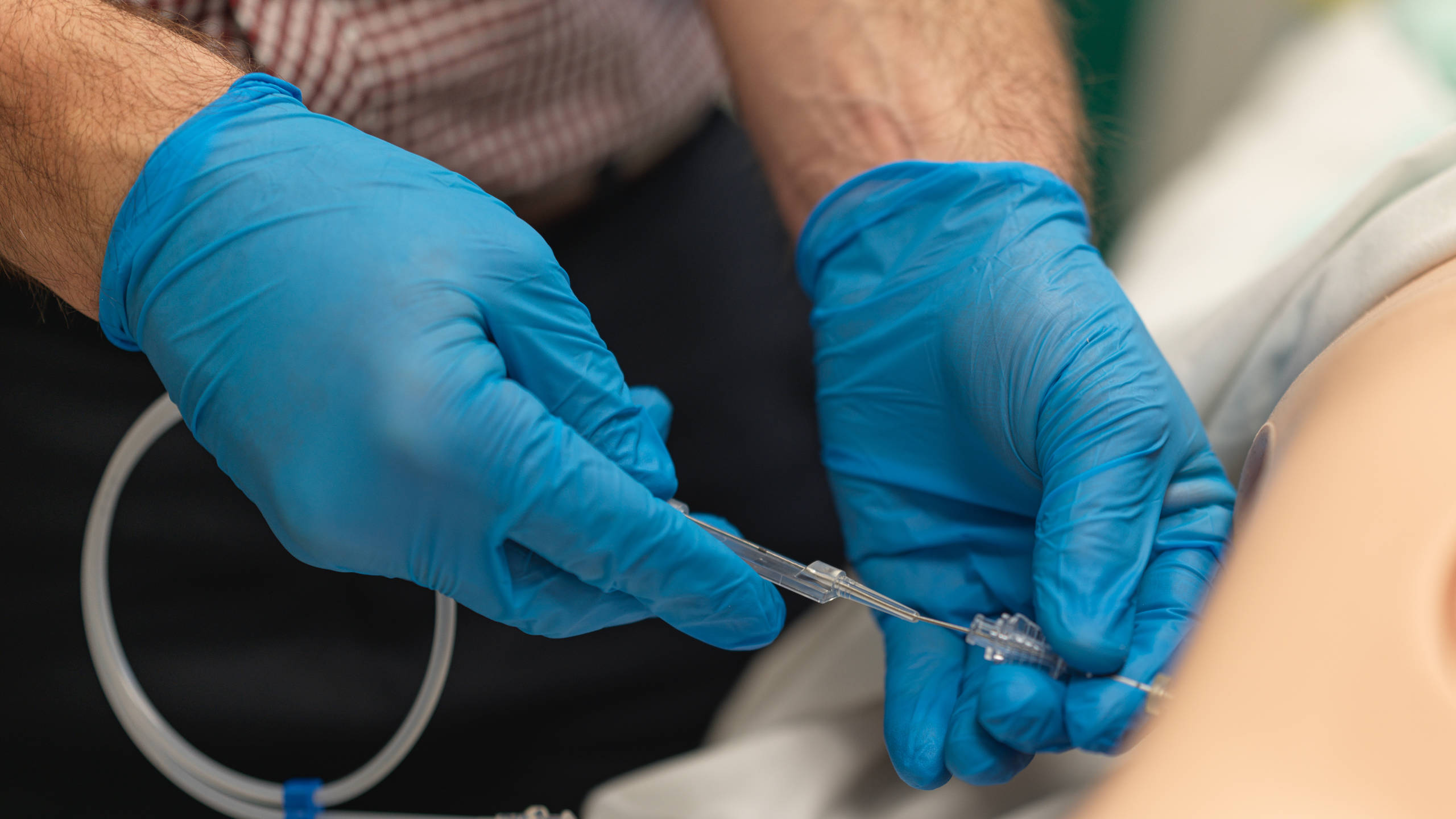
Seldinger Chest Drain Insertion
Acute Care Common Stem (ACCS)Use this resource in conjunction with your real-world training

Experience Summary
In this 360-degree video, observe the procedure of inserting a left-sided chest drain for a large pneumothorax using a Seldinger approach.
Clinical Context
The Seldinger technique for chest drain insertion is a minimally invasive method used to place an intercostal catheter into the pleural space to drain air, fluid, blood, pus, or chyle. Common indications include pneumothorax (particularly tension or recurrent), pleural effusion, empyema, and haemothorax. Compared to blunt dissection techniques, the Seldinger method allows for more controlled and precise placement, particularly in stable patients or when image guidance (ultrasound or CT) is used.
This technique is often preferred in settings such as emergency departments, intensive care units, and interventional radiology, where smaller-bore chest drains (10–16 Fr) are appropriate. It offers advantages in terms of reduced pain, smaller incisions, and fewer complications when properly performed.
Steps of Performing Seldinger Chest Drain Insertion:
- Preparation and Consent:
- Confirm the indication and side of pathology with clinical assessment and imaging (e.g., chest X-ray or ultrasound).
- Obtain informed consent, discussing risks such as bleeding, infection, or organ injury.
- Gather sterile equipment: Seldinger chest drain kit, local anaesthetic, sterile drapes, antiseptic, gloves, and gown.
- Patient Positioning and Monitoring:
- Position the patient supine or at 45° with the arm on the affected side raised above the head to expose the axillary region.
- Monitor vital signs and provide supplemental oxygen if needed.
- Attach cardiac and pulse oximetry monitoring.
- Site Selection and Anaesthesia:
- Identify the insertion site: typically the 4th–6th intercostal space in the mid- to anterior axillary line in the safe triangle.
- Prepare the area with antiseptic and drape it in a sterile fashion.
- Infiltrate the skin, subcutaneous tissue, and pleura with local anaesthetic.
- Needle Insertion and Guidewire Placement:
- Insert the introducer needle into the pleural space while aspirating to confirm entry (air or fluid return).
- Thread the guidewire through the needle and remove the needle, leaving the wire in place.
- Tract Dilation and Catheter Insertion:
- Use a dilator (and subsequent dilators as appropriate) over the guidewire to enlarge the tract gently.
- Advance the chest drain catheter over the wire into the pleural space to the appropriate depth.
- Remove the guidewire, secure the catheter with sutures and an occlusive dressing.
- Post-Insertion Care:
- Connect the catheter to an underwater seal drainage system.
- Confirm placement with a chest X-ray.
- Monitor drainage, respiratory status, and signs of complications.
Learning Outcomes
- Observe the procedure of inserting a chest drain using the Seldinger technique.
- Understand the procedural steps of inserting a chest drain using the Seldinger technique.
- Understand the equipment required to insert a chest drain using the Seldinger technique.
- Understand the key safety points in inserting a chest drain using the Seldinger technique.
External Resources
